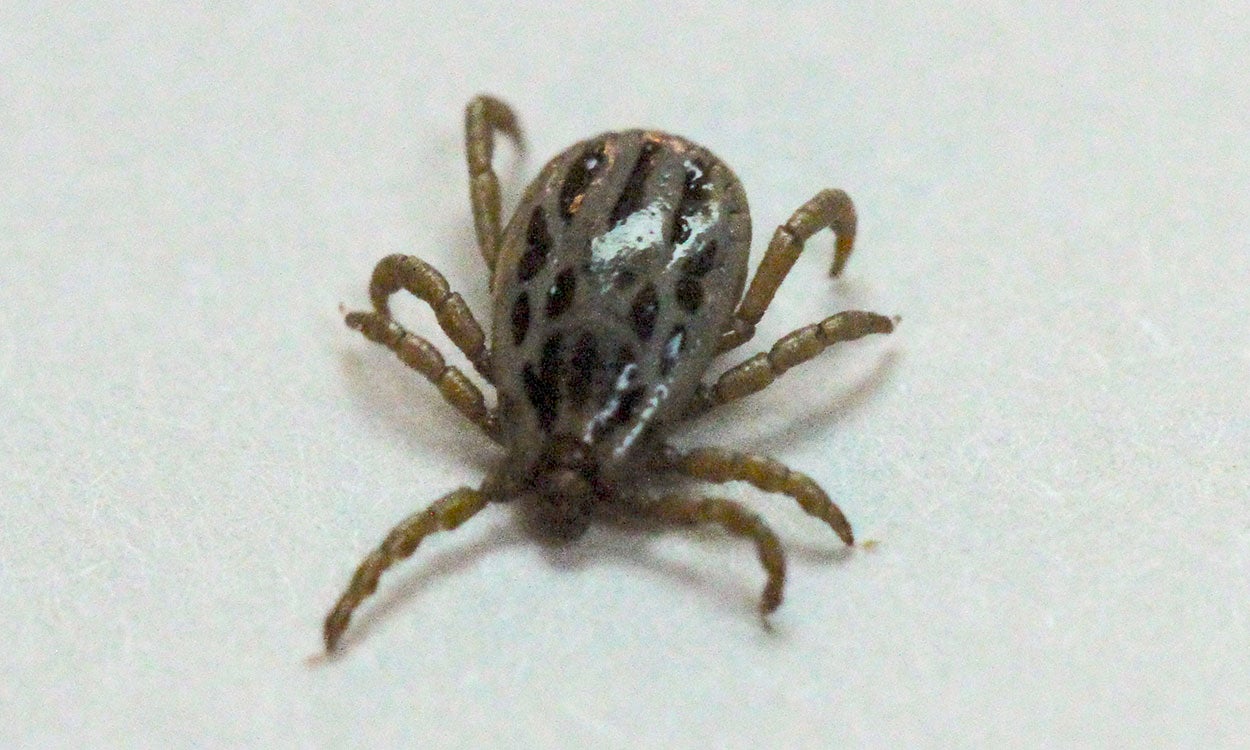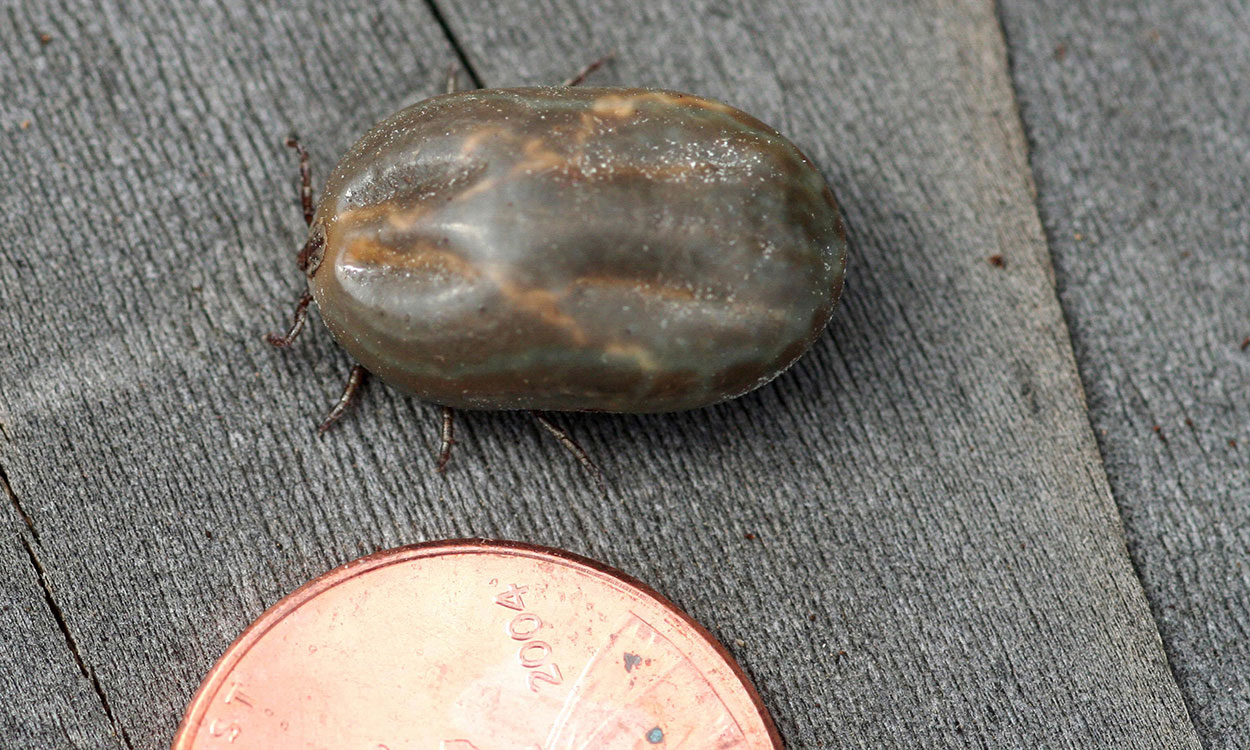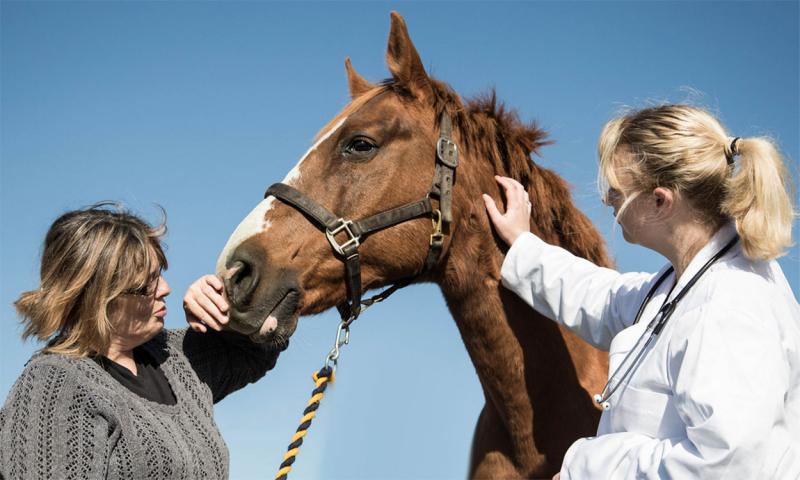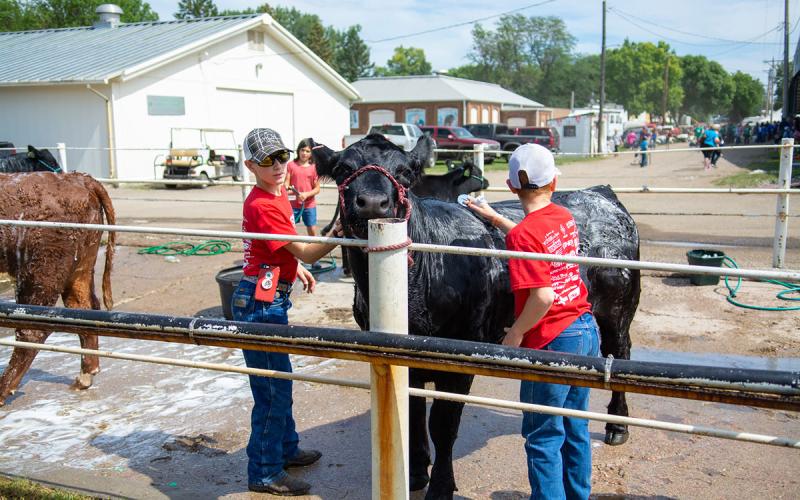Believe it or not, ticks aren’t only active during the growing season in South Dakota. Even throughout the cold winter months, there is a species called the winter tick, or moose tick, that parasitizes animals. The primary hosts of winter ticks include moose, elk, deer, and other large wild game. However, they can also be found on domesticated animals, such as horses and cattle.
Winter ticks are more noticeable in late winter and early spring, since they are fully grown by this time. In South Dakota, there have been recent reports of winter ticks being found on horses and questions about how to manage them.
Identification
Male

Winter ticks are small and will only grow to about ¼ of an inch long. Adult males are mostly brown in color with a pattern of white and brown markings on their back (Figure 1).
Female

Females may reach up to ¾ of an inch when fully engorged with blood (Figure 2). Adult females are also brown but have a white scutum (the area behind the head).
Lifecycle
There is one generation of winter ticks per year. The ticks first emerge in late summer and early fall after lying dormant as eggs for most of the growing season. New hatchlings find a suitable host and remain on that animal to feed, mature, and mate during the winter. In the spring, female winter ticks drop to the ground and lay their eggs for the next generation.
Management

Winter ticks are not considered to be a human health concern. However, they can cause issues for infested animals if present in large numbers.
Signs of an infestation include anemia, hair loss, lack of appetite, and abdominal swelling. Severe cases can eventually result in death if left untreated.
Brushing, washing, insecticide sprays and pour-on treatments can all be used to remove or treat winter ticks on infested animals. Only use insecticide products that are labeled for ticks and be sure to follow the label directions. Consult a veterinarian for more specific treatment recommendations.


